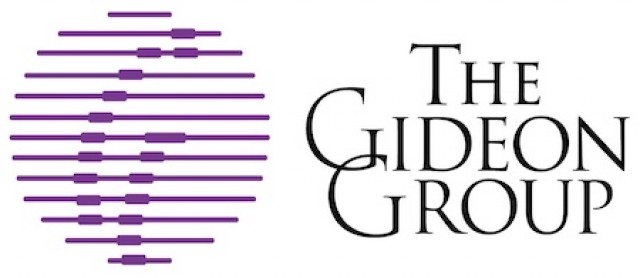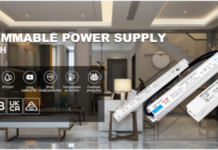Most founders over-engineer valuation and under-engineer transferability. Build a company that runs without you — that’s when real buyers show up.
(Isstories Editorial):- Scottsdale, Arizona Oct 26, 2025 (Issuewire.com) – The One Exit Mistake That Kills Most Deals
More on Isstories:
- Zambia Election News 2026 Update – Top Trending Topic News
- Grand Millennium Muscat Unveils a Spectacular Lineup of Festive Celebrations for the 2025 Holiday Season
- North Jersey Woodworker Launches Free Custom Kitchen Table Giveaway for Local Family
- Phoenix Global Development Forum for Enterprises lands in Kuala Lumpur
- Nigerian Founder Ajoge Job Adds African and Caribbean “Swallow” Dishes to RAB Delivery App
Exits rarely fail because of weak products. They fail because the business is built around a single person. Transferability–not valuation–defines exit readiness, institutional confidence, and the ultimate price tag.
- Buyers pay for continuity, not charisma. A company that cannot sustain performance for 90 days without its founder is immediately discounted.
- Transferability drives valuation. Documented processes, recurring revenue, and verified data make buyers comfortable paying premiums.
- Operational independence defines investability. When systems replace personalities, buyers compete instead of negotiate.
The Overlooked Variable in Exits
Most founders misread an exit as a pricing event. For acquirers, it is a transfer event. They’re not buying history–they’re buying repeatability. The question that drives diligence is deceptively simple:
“If the founder disappeared for three months, would the business still hit plan?”
When that answer is uncertain, valuation becomes defensive. The deal size doesn’t shrink because the buyer doubts the idea it shrinks because they doubt the system.
Professional acquirers price risk, not passion. They expect documentation, delegation, and discipline. A brilliant founder with undocumented systems represents exposure, not value.
Why Hero-Driven Companies Lose Value
The mythology of the heroic founder is commercially seductive but financially dangerous. Early-stage businesses grow because of the founder’s intuition and energy. Mature companies exit because they outgrow it.
A hero-driven firm often relies on personal relationships, undocumented know-how, and instinctive decision-making. During due diligence, these traits convert from strengths to liabilities. Missing SOPs, opaque P&Ls, and single-point dependencies tell a buyer: “This company works only if this person stays.”
Empirical data supports the penalty. Companies with institutionalized systems, verified data, and second-line management routinely command 15-25% higher valuations than similarly profitable founder-dependent firms. The delta isn’t about performance–it’s about confidence.
The Transferability Index
Transferability can be quantified through five operational lenses.
Process Maturity asks whether Standard Operating Procedures are current, auditable, and consistently applied. Version-controlled manuals and onboarding templates demonstrate discipline. Target score: four out of five.
Financial Hygiene measures whether an external auditor could reconcile ledgers without internal assistance. Monthly closes, documented trial balances, and reconciled statements signal reliability. Target score: four out of five.
Key-Person Exposure identifies how much execution still depends on founder approval. When more than ten percent of decisions need top-level sign-off, buyers flag continuity risk.
Revenue Quality examines how much income is recurring or contracted. Predictable revenue–ideally seventy percent or higher–reduces volatility and raises multiples.
Customer Concentration assesses dependence on the top three clients. Anything above forty percent indicates fragility.
A composite score above 3.5 means institutional readiness. Below 3 signals structural weakness.
The 12-Month Transition Framework
Transforming founder-centric operations into investor-ready systems usually takes one fiscal year and disciplined sequencing.
Quarter 1 – Institutional Hygiene:
Clean the data room. Close books monthly, standardize contracts, and eliminate compliance irregularities. This quarter converts chaos into control.
Quarter 2 – Operational Backbone:
Document every workflow, map decision trees, and delegate recurring tasks. Track five critical metrics weekly to build accountability loops.
Quarter 3 – Continuity Planning:
Create two-deep coverage for all essential roles. Introduce retention incentives for senior staff to prevent attrition after the sale.
Quarter 4 – Financial Readiness:
Conduct a Quality of Earnings review, normalize working capital, and complete diligence files before outreach.
A company that maintains stable performance for one quarter with the founder absent is considered structurally transferable.
Why Buyers Withdraw
Deals rarely collapse over poor numbers–they collapse over poor organization. Missing documents, inconsistent reporting, or slow response times erode trust. In mergers and acquisitions, speed equals confidence.
When diligence teams request files, the ability to deliver reconciled ledgers, signed contracts, and KPI dashboards within 24 hours communicates mastery. Delays or patchwork data create friction, turning full offers into conditional ones.
Institutional buyers assume operational discipline mirrors financial integrity. The opposite is also true: chaos discounts valuation.
Case Insight: The 90-Day Rule
Consider two similar mid-market firms–each generating $10 million EBITDA. One is founder-dependent; the other runs with autonomous management. Both approach exit simultaneously.
The first fails to supply a clean trial balance for three consecutive diligence rounds; every customer relationship routes through the founder’s phone. Buyers cut their offer by 20% and add a two-year earn-out.
The second presents monthly closes, independent management dashboards, and delegated client ownership. Multiple bidders emerge, each confident they can step in on day one. Final valuation exceeds expectations by 22%.
“The moral: markets don’t reward genius; they reward systems.”
Perception as a Financial Multiplier
In private equity, perception is mathematics. The presence of order, organized folders, standardized templates, versioned contracts acts as psychological due diligence. When acquirers sense structure, they accelerate. When they sense personality-driven volatility, they retreat.
Institutional investors translate perceived control into quantifiable value. Every day of delay or confusion is silently priced into the discount rate.
A Sale Is a Transfer of Systems, Not Leadership
Modern buyers don’t purchase leadership they purchase repeatability. Sustainable value lies in how effectively a business reproduces its results without its architect.
The analogy is aviation. The buyer isn’t paying for a talented pilot they’re buying an aircraft capable of flying safely with any trained crew. Procedures, not charisma, keep it in the air.
Transferability transforms an exit from negotiation into competition. It turns a founder’s legacy from a personality story into a permanent institution.
The companies that command premiums aren’t the loudest, they’re the ones that can prove, on paper and in performance, that the machine runs by design.
Valuation rewards discipline. Transferability is the discipline buyers can trust.
About
The Gideon Group Inc. is a global capital-advisory and investment-banking firm headquartered between Dubai and Scottsdale, bridging sovereign finance, energy, and digital infrastructure with institutional-grade execution.
press: [email protected]

The Gideon Group Inc.
[email protected]
+1602 896 9000
14850 N Scottsdale Rd Suite 485 Suite 485, Scottsdale, AZ 85254, United States
https://www.gideongroup.net
This article was originally published by IssueWire. Read the original article here.


















